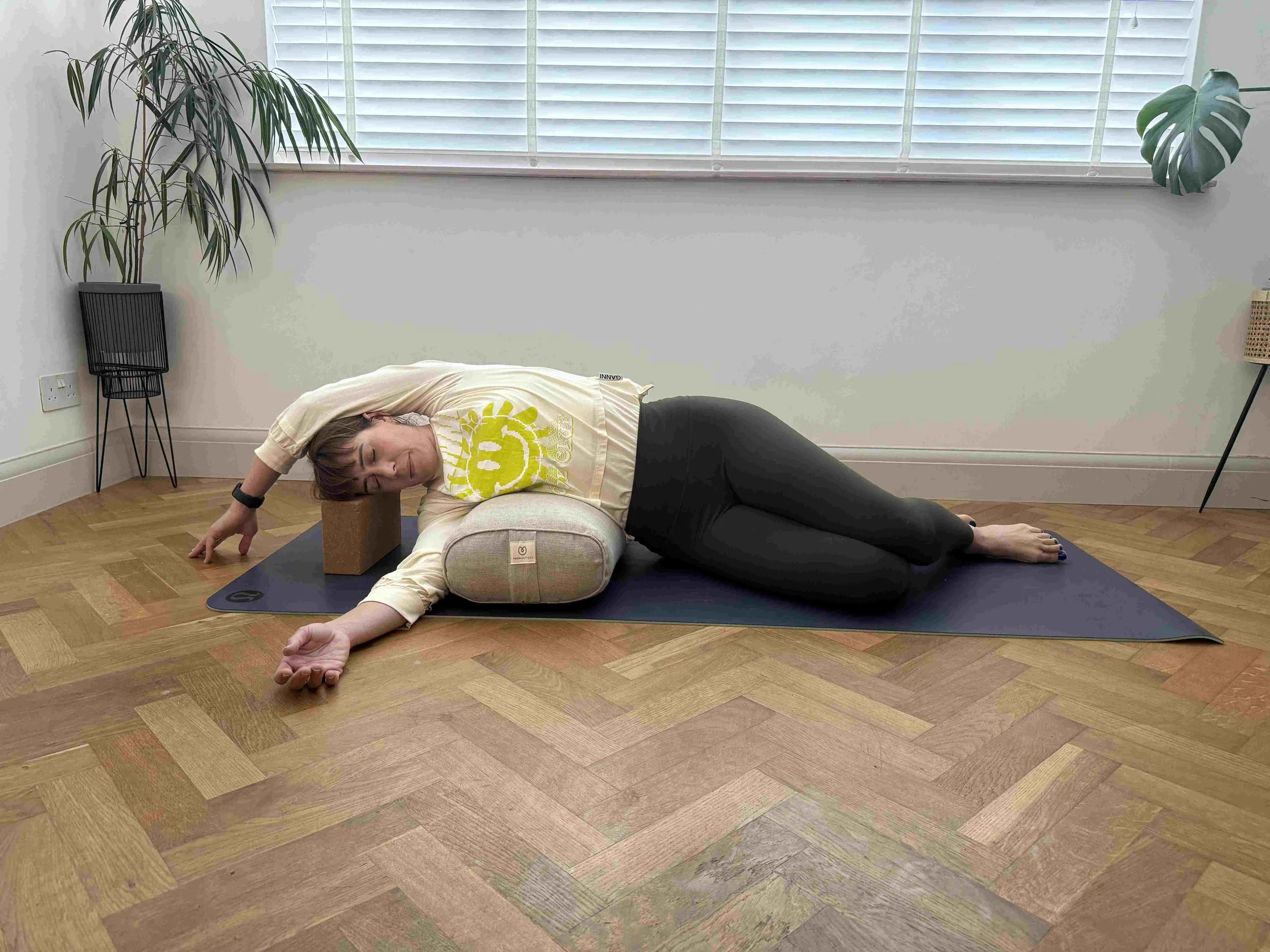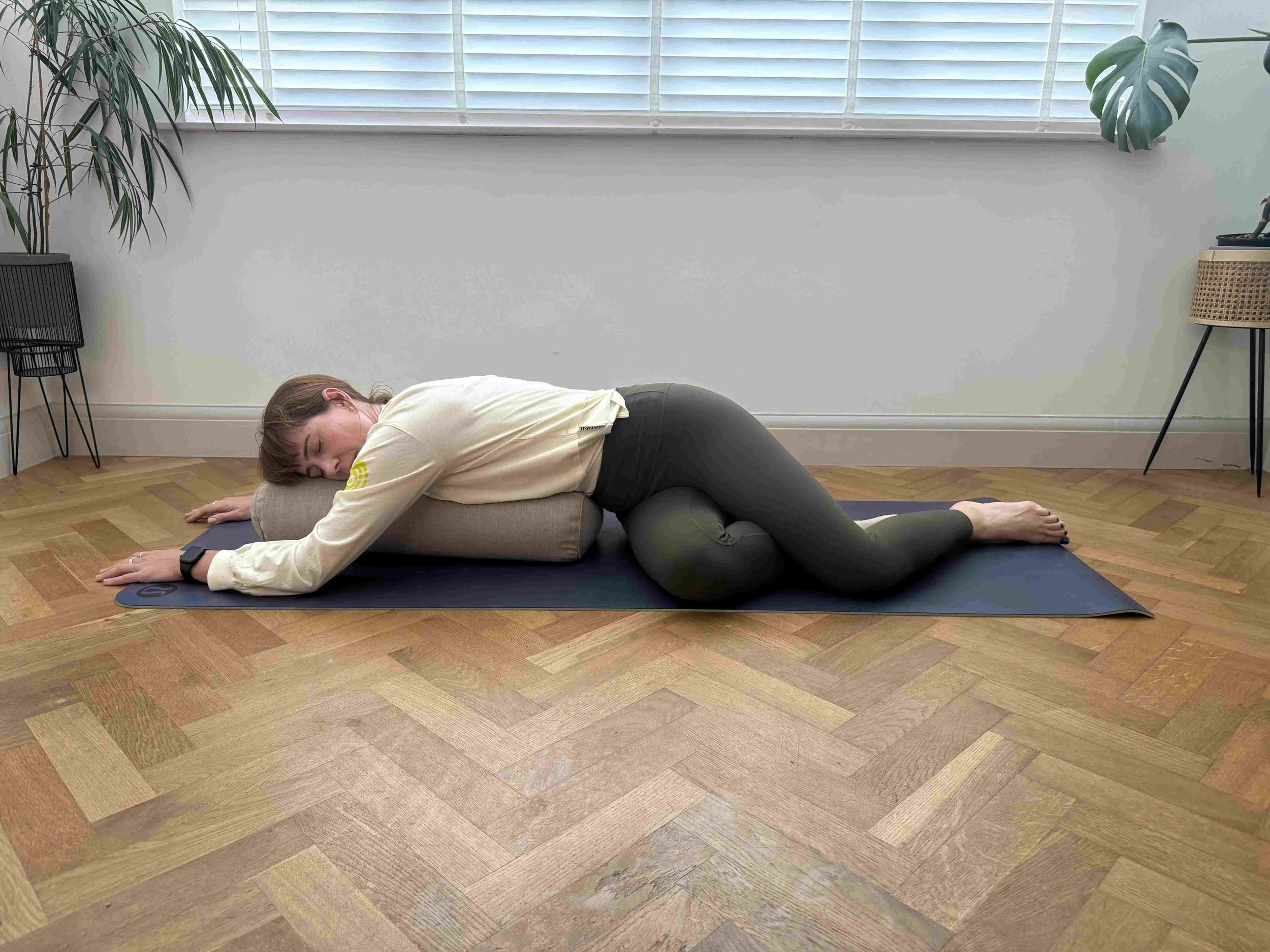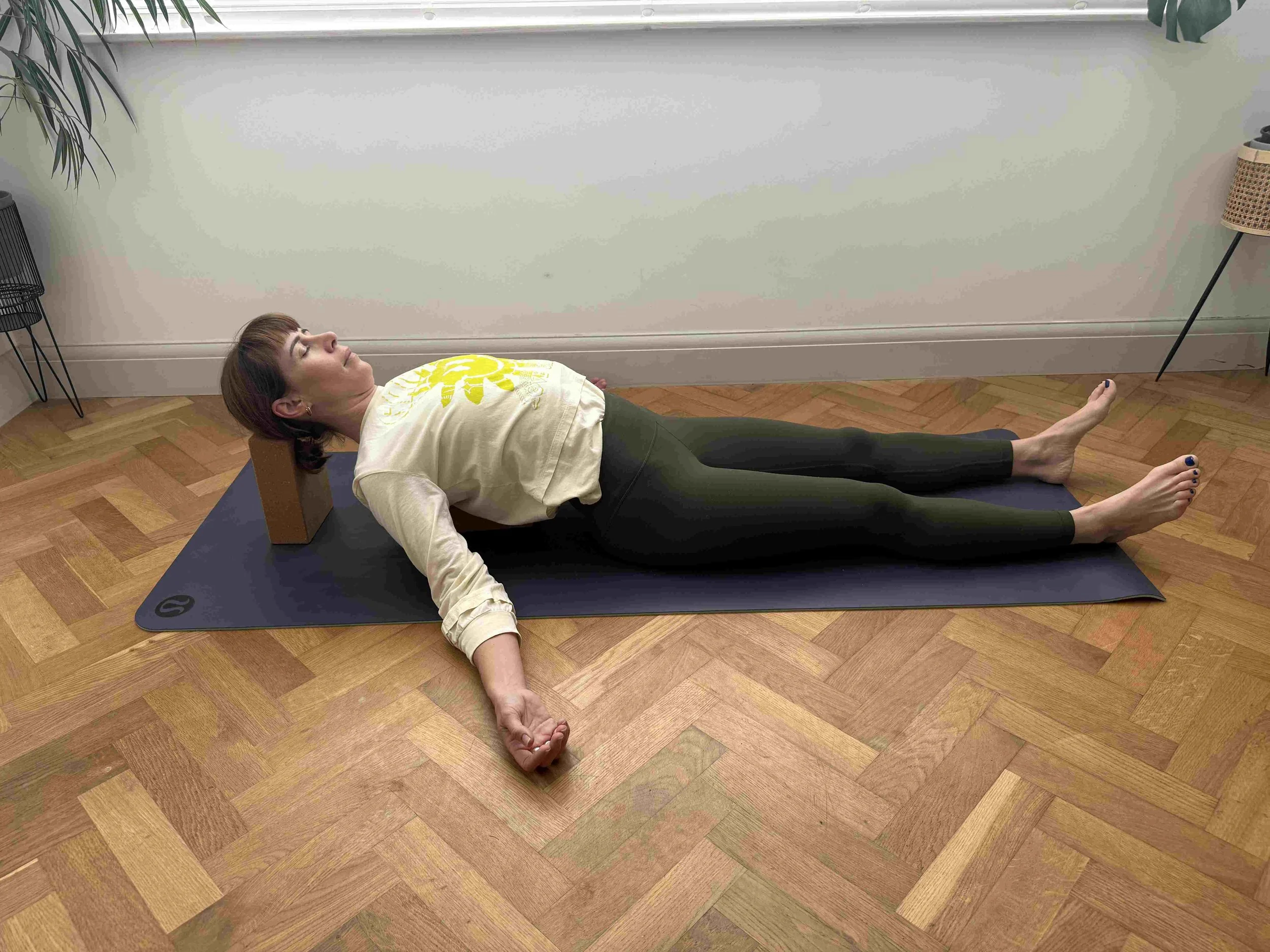Nervous System Reset – take-home resources
Thank you so much for joining the Nervous System Reset workshop. This page gathers together what we explored, why it works, and some simple practices you can try at home. Use it as a reminder and a gentle guide to support your nervous system in daily life.
Why it works
Modern life often keeps us in ‘sympathetic mode’ (fight, flight, or freeze). Over time this can leave us tired, tense, and on edge. The practices we explored work by:
Activating the parasympathetic nervous system – the body’s ‘rest and restore’ mode.
Soothing the amygdala – calming the part of the brain that scans for threat.
Improving fascia health – gentle movement and supported stillness release stiffness in connective tissue, which also supports nerve function and has a whole host of other benefits, including hormone regulation and mental health support.
Balancing brain and body – eye movements, breath, and sound help bring the whole system into harmony.
What you can try at home
1. The physiological sigh
Neuroscience research from Dr Andrew Huberman’s lab shows that the fastest way to reduce stress in the body is through a simple breath pattern called the physiological sigh. This is a double inhale followed by a long exhale:
Inhale through the nose.
Take a second, shorter inhale to fully expand the lungs.
Exhale slowly through the mouth.
This works because the double inhale reinflates tiny sacs in the lungs that collapse under stress, while the long exhale offloads carbon dioxide. Together, this lowers anxiety, steadies the nervous system, and signals safety to the brain .
2. Coherent breathing
Inhale for 5 counts, exhale for 5 counts. Do this for 2–5 minutes to reduce stress and steady your heart rate.
3. Exhale-lengthening breath
Inhale for 4, pause, exhale for 6, pause. Repeat this 4-5 times, extending the exhale by one count each round. This is one of the quickest ways to tell your body ‘you’re safe.’
4. Self-soothing touch
Place one hand on your chest, one on your belly. Notice the warmth of your hands and the rise and fall of your breath. Sense into the beat of your own heart, and the brilliance of your bodily systems working to breathe, nourish and relax you.
5. Nerve flossing & cat–cow with opposite head movement
Gentle, mindful movements that help free up the nerves along the spine, improving communication between body and brain:
Cat (rounding the back, chin to chest) → Cow (arching the back, looking up)
Add head in the opposite direction of the spine to create space and mobility.
6. Shaking it off
Stand with knees soft and bounce gently, let arms and shoulders go loose - remember ‘spaghetti arms'! A minute or two is enough to release tension and boost circulation. If it’s hard getting started, it can help to put some music on for this one. Feel into the beat, find your breath and let an exhale take you into your first little bounce. Don’t overthink it! When you’re done, stand or lay still for a moment and feel the aliveness of your body.
Restorative yoga poses
Stay for 3–5 minutes in each shape unless noted otherwise. Use blankets, bolsters, or cushions for support.
Belly roll – lie face down with a rolled blanket or cushion under your belly (in the soft tissue, avoiding frontal hip points and lower ribs), breathing into it to massage the organs and release the diaphragm.
Side-lying pose – bolster under the torso, arms overhead, breathing into the side ribs.
Supported twist – bolster under chest, arms wide, allowing spine to release.
Supported fish – back over two blocks or cushions, one under the shoulders, one under the head.
Legs floating or up the wall – lie on your back with legs floating above hips or resting up a wall.





Yoga Nidra resources
I’m in the process of recording my own guided Yoga Nidra, which I’ll share with you during this course. In the meantime, I recommend the beautiful practices of Ally Boothroyd on Insight Timer. Even 10–15 minutes can reset your whole system.
Gentle reminder
You don’t need to do everything. Pick one or two practices that feel good and let them become part of your daily rhythm. Small, consistent steps are what bring the biggest shifts over time.
Interested in learning more about yoga for the nervous system?
I run a twice-yearly retreat - Wild Reset: A Nervous System Yoga Retreat - where we dive deep into yoga and wellbeing practices designed to bring you back into balance. 2026 dates are launching soon - you can sign up to be notified when they’re launched on this page.
I also created a reading and resources list for all things nervous system - check it out!